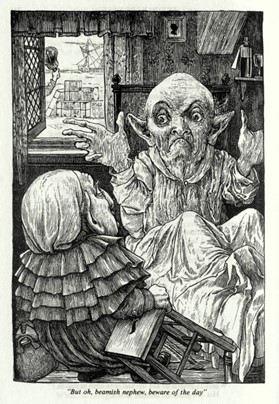Throughout Jaworowski’s statement, his primary rhetorical tactic is to cite a good paper, by reputable researchers
Jaworowski wants to imply that CO2 was dissolved in liquid water within the ice core under pressure, then remained in solution while the measurements were made, thus giving falsely low measured concentrations at increasing depths. He cites Mulvaney et al. as evidence that “even the coldest Antarctic ice … contains liquid water.” Though he cites the paper, he doesn’t say exactly how it supports his position. If we look at the paper, we can see the reason for his silence.
Mulvaney, Wolff and Oates were reporting on concentrations of sulfuric
Here’s a picture of the ice sample, showing the grain boundaries:

Note (from the scale bar at the bottom) that the grains range from about 2 to 3 mm across.
Now here’s a picture of the triple junction where the sulfuric acid was found:

The volume in question is, at the most, a few micrometers on a side (see the scale bar).
Calculation of what fraction of the total volume could possibly have been represented by these triple junctions is left as an exercise for the reader.
So this is where Jaworowski was hiding the extra CO2?
[1] Robert Mulvaney has a very interesting short piece titled How are past temperatures determined from an ice core” in the June 2005 Scientific American.
[2] IUPAC has it “sulfuric”, so that’s the way I’ll spell it. My apologies to readers in the Commonwealth.
